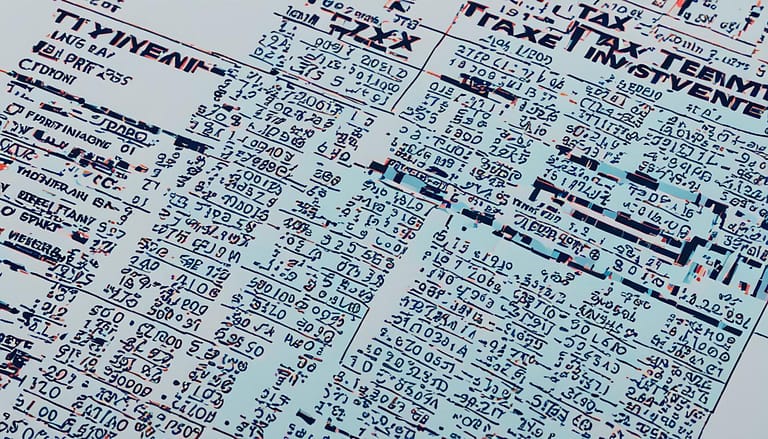Tokenomics: The Key to Making Informed Crypto Investments
Amidst the fervor and complexity that encapsulate the burgeoning realm of crypto investments, a profound understanding of tokenomics emerges as a cornerstone for investors aiming to navigate the intricate tapestry of decentralized finance (DeFi). As the rigorous discipline behind token valuation, tokenomics delineates the intrinsic elements that dictate a cryptocurrency’s worth, such as its inception, circulation, and the overarching regulation within the vast blockchain ecosystem. For Canadians invested in the digital domain, leveraging tokenomics is not merely an option but a critical component of a savvy investment strategy aimed at unearthing the potential trajectories of digital assets.
Whether you’re a seasoned investor or new to the crypto market, grasping the intricacies of tokenomics can illuminate how a token’s utility, the influx of capital, and anticipated performance interact, thereby shaping the future landscape of investment opportunities. In a market defined by volatility and innovation, cultivating this knowledge could be the key to unlocking informed and prosperous decisions in the ever-evolving world of crypto.
Key Takeaways
- An in-depth knowledge of tokenomics is indispensable for understanding and forecasting token valuation.
- Tokenomics is at the heart of informed crypto investments, combining elements of blockchain utility, supply, and demand.
- Adopting tokenomics into one’s investment strategy can yield significant insights about the viability and sustainability of a token within decentralized finance.
- The intricate relationship between market dynamics and a token’s economic principles are integral for investment success.
- Canadian investors will benefit from having a granular appreciation of how tokenomics influences the digital assets’ market behaviour.
Understanding the Fundamentals of Tokenomics
Delving into the world of cryptocurrencies unveils a complex web of economic systems vital for maintaining the integrity and function of digital currencies. At the core of these systems lies tokenomics, the study that couples traditional economic theory with the innovative technological framework of cryptocurrencies. As we further explore the essence of tokenomics, it becomes clear how this field molds the contours of the blockchain ecosystem, affecting the way digital assets are perceived, utilized, and managed.
Defining Tokenomics in the Crypto World
Tokenomics is a term that finds its roots in two words: ‘Token’ and ‘Economics’. It encompasses the policies and principles that govern a cryptocurrency’s issuance and management. This includes specifics like the total supply of tokens, their distribution methods, and the rules that dictate their circulation within the blockchain ecosystem. Understanding tokenomics is paramount for investors, developers, and participants within the decentralized applications sphere, as it forms the crucial underpinning of a crypto economic model.
The Impact of Tokenomics on Digital Assets
Every digital asset has its unique tokenomics structure, influencing not only its value but also its functionality and long-term viability. The methodologies underpinning digital asset management across various platforms hinge on their tokenomics. It is the blueprint that steers a cryptocurrency’s demand, supply, and distribution—dictating its potential for success or failure within the market.
Tokenomics as the Backbone of Decentralized Finance
In the decentralized world of finance, tokenomics underpins the operational viability of projects. It provides a systematic approach to forecast the trajectory and stability of digital assets. As DeFi platforms strive to create a trustworthy and transparent financial system, the principles of tokenomics serve as a guide to deliver assets that ensure network security, necessary incentives, and user engagement, thus fortifying the overarching blockchain ecosystem.
| Component | Role in Tokenomics | Impact on Blockchain Ecosystem |
|---|---|---|
| Total Token Supply | Sets the scarcity and inflation parameters | Influences long-term investor confidence and asset valuation |
| Distribution Mechanism | Defines how tokens are allocated among stakeholders | Ensures fair access and potential decentralization benefits |
| Utility & Function | Determines how tokens can be used within the network | Drives user engagement and bolster platform growth |
Exploring the Relationship Between Tokens and Their Economic Models
The arena of Tokenomics Analysis hinges on comprehending the elaborate nexus between Blockchain Tokens and their bespoke economic models. Such analysis scrutinizes elements that shape the landscape of a cryptocurrency, mapping out the circuitry of its inherent value system. The tenets of this relationship are pivotal, where the utility of a token, tempered by market offerings and user demand, reflects upon its market dynamics.
Here, we examine the integrated fabric that intertwines the construct of Crypto Utility with its economic design. This intricate interplay forms a foundation where the perceived value of a token is often a derivative of its use-case scenarios and the scarcity imbued by its issuance policy. In the volatile expanse of digital currency, where Market Dynamics shift with evolving technology and regulatory climates, this intersection remains critical for investors and participants alike.
Below is a curated analysis detailing key factors that influence the association between blockchain tokens and their respective economic blueprints:
| Token Feature | Economic Impact | Market Outcome |
|---|---|---|
| Total Supply | Dictates scarcity and potential value appreciation | Influences investor decisions and market capitalization |
| Utility and Functionality | Drives actual use, demand, and sustainability | Token retains or increases in value based on adoption |
| Distribution Methods | Affects the rate of circulation and entry into markets | Impacts liquidity and accessibility for users and investors |
| Future Token Issuance | Influences perceptions of dilution and token economics | Can potentially lead to fluctuations in token pricing |
Synchronizing the technical aspects of Crypto Utility with economic principles offers a tempered lens through which one may foresee potential market behaviors. For instance, factors such as limited token supply coupled with robust demand generally predicate an uptrend in valuation. Conversely, oversupply paired with underwhelming or redundant utility can steer a token towards depreciation – a plight no investor wishes to encounter.
Thus, a meticulous and educated approach to Tokenomics Analysis arms stakeholders with the foresight to navigate the tumultuous waters of Blockchain Tokens, steering clear of unnecessary whirlpools and charting a course towards potential havens of investment success.
The Distinction Between Cryptocurrency Coins and Tokens
In the burgeoning world of digital currency, the terms ‘cryptocurrency coins’ and ‘tokens’ are often employed synonymously by the uninitiated. However, they represent distinctly different facets of blockchain technology. Coins such as Bitcoin and Ether function primarily as digital currencies, each with their respective blockchains that serve as large-scale, decentralized ledgers to record transactions. Tokens diverge in nature, created and hosted on pre-existing blockchains, leveraging the power of smart contracts to introduce multifarious applications far transcending monetary exchanges.
Differences in Blockchain Involvement
Cryptocurrency coins, such as Bitcoin, are native to their own unique blockchain, essentially serving as the lifeblood of the network’s operations. They are integral to maintaining the consensus mechanisms that validate and secure transactions. Ethereum’s native coin, Ether, similarly fuels its expansive network, paying for transaction fees and computational services. In contrast, tokens are blockchain-agnostic; they are not the native currency of their hosting blockchain but are built on top of existing platforms like Ethereum through the development of smart contracts.
Functional Diversity of Crypto Tokens
The digital currency landscape is replete with tokens exhibiting a profusion of functionalities that cryptocurrency coins typically do not provide. Unlike coins, tokens can embody diverse forms of assets—be it digital art through non-fungible tokens (NFTs), participation in decentralized finance (DeFi), or as digital representations of physical assets. This utility is most notably harnessed through the ERC-20 standard on Ethereum, which has become a foundational protocol for generating and deploying tokens in the ecosystem.
Applications Beyond Monetary Value
While many cryptocurrency coins are created with the intention of serving as a medium of exchange, their utilitarian potential often ceases therein. Tokens are designed to be more than just an alternative currency; they can represent voting rights within decentralized autonomous organizations (DAOs), access to a service within the blockchain project, or even stakes in a digital platform. Tokens’ versatility is best exemplified in the context of smart contracts, automating and enforcing agreements without intermediaries—an innovation that significantly expands their realm of applicability beyond mere financial instruments.
Analyzing Token Utility and Demand in Tokenomics
When we delve into Tokenomics Investment, examining the element of token utility provides pivotal insights into a token’s potential for success. This aspect of utility embodies the pragmatic value tokens offer within a platform’s ecosystem, from their roles in facilitating transactions to their usage as instruments for governance. The principal value of a token is determined significantly by its real-world applications, which in turn fuel token demand. Therefore, a thorough analysis of token utility is paramount for investors seeking to forecast Blockchain Project Viability and the overall likelihood of Crypto Project Success.
A token’s purpose within a blockchain project can serve a diverse array of functions—each influencing demand differently. Utility tokens might enable access to software services, grant rights in decentralized autonomous organizations (DAOs), or act as digital keys unlocking platform-specific features. Thinking of token utility as the lifeblood of the cryptocurrency, its functionality stimulates user engagement and retention, fostering a thriving ecosystem conducive to long-term growth.
| Token Utility | Impact on Demand | Indication of Viability |
|---|---|---|
| Transactional | High if platform services are in demand | Positive if utility is scalable |
| Governance | Varies with the degree of decentralization | Positive if governance correlates with token holder value |
| Staking | High if rewards are attractive | Positive if staking fosters network security and loyalty |
| Access to Features | Dependent on exclusivity and attractiveness of features | Positive if features enhance user experience |
It is through understanding the nuanced relationship between a token’s use-cases and the level of engagement from its holders that investors discern between fleeting opportunities and sustainable investments. In the intricate dance of tokenomics, the harmony between token utility and demand paves the path to a crypto project’s ascendancy or descent.
- Transactional utility drives volume, but must be complemented by robust security protocols.
- Governance engagement suggests a committed community, often translating to a resilient network.
- Exclusive feature access can create fervent demand, but unilateral changes could disrupt projections.
The successful synthesis of these elements facilitates a credible, transparent forecast of both present and future valuations, reaffirming the role of tokenomics as an indispensable investment compass in the erratic terrains of digital currency.
Tokenomics
The analysis of tokenomics is a crucial step toward understanding the nuanced elements that influence a cryptocurrency’s valuation and investor sentiment. Delving into this analysis provides insight into how Token Supply, Token Distribution Model, Investor Behavior, and Crypto Asset Utility can collectively drive the success or failure of a digital asset. Let’s explore these intricate components to better grasp their role within the cryptocurrency landscape.
Supply Dynamics and Token Valuation
Token supply is at the heart of token valuation, where fixed and inflationary models dictate the scarcity and abundance of a crypto asset, respectively. As investors place their trust in a cryptocurrency, the understanding of its supply mechanism is critical in forecasting its future worth. Fixed supply tokens, similar to Bitcoin’s model, can create predictability and stability, making them a more attractive investment for those wary of inflation.
Distribution Strategies and Investor Impact
An equitable and strategic Token Distribution Model is vital to moderating investor behavior and ensuring fair allocation. Various approaches, from airdrops and ICOs to staking systems, not only encourage wider token distribution but also incentivize holding, which can reduce market volatility and promote steady growth. The choices made in token distribution have long-term implications for investor confidence and crypto asset utility.
Token Utility: Beyond Market Speculation
Crypto Asset Utility transcends the realm of market speculation and serves as the backbone for the intrinsic value within the network. It is the very usage of a token that cultivates demand and fosters a robust ecosystem. Whether it’s to execute smart contracts, participate in governance, or enable decentralized finance operations, a token’s utility can be a more reliable indicator of its long-term viability than mere trading speculation.
| Token Type | Supply Model | Distribution Method | Utility |
|---|---|---|---|
| Utility Tokens | Fixed | ICO, Staking | Access to platform services |
| Security Tokens | Regulated | STO | Investment in assets |
| Governance Tokens | Variable | Voting Systems | Project governance |
| DeFi Tokens | Inflationary | Liquidity mining, Airdrops | Financial operations |
The Economic Implications of Token Supply and Scarcity
The principles of tokenomics encompass a variety of factors that directly impact the viability and potential profit of cryptocurrency investments. Central among these is the concept of token scarcity, which, in combination with blockchain validation protocols, contributes to a token’s overall market capitalization and its underlying economic model. These economic drivers can create an environment ripe for investment opportunities or serve as a cautionary landscape marked by pitfalls.
Cryptocurrencies that boast a capped supply, such as Bitcoin, leverage scarcity in a way similar to precious metals like gold, creating a perceived value that can drive demand. This cap is a key feature in blockchain validation processes, ensuring that the supply limitations are preserved and publicly verifiable.
Conversely, tokens following an inflationary economic model can be subject to devaluation as their circulating supply increases. The lack of scarcity can lead to investor skepticism, as the potential for dilution poses a noteworthy risk to asset value stability. Thus, the model a token subscribes to is paramount in informing an investor’s strategy and market expectations.
Token scarcity isn’t just a buzzword; it’s an intrinsic component of a cryptocurrency’s economic model that wields the power to shape market capitalization and investor confidence.
- Fixed-supply tokens can offer a deflationary model, encouraging investors with the promise of value retention over time.
- Inflationary tokens create a dynamic economic landscape, necessitating careful market observation and analysis.
- Blockchain validation processes provide transparency and trust in the supply’s integrity, engendering a secure investment environment.
Successful blockchain projects seamlessly integrate these elements within their economic model, turning the abstract concepts of supply and demand into tangible market performance and investor returns. It is the synergistic relationship between these factors that ultimately dictates token longevity and prosperity in an ever-evolving digital economy.
Strategic Token Distribution and Allocation Models
As the crypto landscape matures, the importance of strategic token distribution has never been more apparent. These allocation models serve as the foundation for successful crypto fundraising efforts, setting the stage for the future stability and growth of any digital asset. Initial Coin Offerings (ICOs), Security Token Offerings (STOs), Initial Exchange Offerings (IEOs), and Crypto Airdrops are methodologies that lay the groundwork for a cryptocurrency’s journey in the market.
Initial Coin Offerings and Their Significance
The advent of Initial Coin Offerings (ICOs) revolutionized crypto fundraising by allowing projects to generate capital directly from investors around the world. Token allocation during an ICO is critical—it determines the starting financial base of the project, impacts investor confidence, and sets the token’s initial market valuation. The success of any ICO depends deeply on the trust and transparency upheld during the Token Allocation stage.
The Role of Airdrops in Tokenomics
Crypto Airdrops serve to increase distribution and boost the token’s presence in the market. By gifting tokens to existing cryptocurrency holders, projects can incentivize user engagement and reward community members. The strategic execution of airdrops is integral for widespread token adoption and is considered a cornerstone in the Token Allocation process.
Ensuring Fair Distribution in the Crypto Space
Maintaining equity in the distribution of tokens is essential for the democratization of the crypto space. Fair distribution protocols ensure that no single party has an overwhelming influence over the market, creating a more stable environment for both the asset and its investors. Tokenomics strategies must prioritize balanced allocation methods to foster long-term sustainability and trust in the blockchain ecosystem.
| Distribution Method | Key Objectives | Common Approaches | Impact on Token Stability |
|---|---|---|---|
| ICO | Capital generation, community building, initial valuation establishment | Vesting periods, tiered pricing, capped contributions | Depends on fair initial allocation and investor confidence |
| Airdrop | Increase token circulation, reward loyalty, improve visibility | Snapshot-based distribution, task completion rewards | Can lead to increased adoption if strategically implemented |
| Vesting | Prevent market dumping, align long-term interests of stakeholders | Lock-up periods, gradual release schedules | Creates stability by managing selling pressure |
Token Analysis: Gauging Project Success and Token Integrity
In the rapidly evolving realm of Blockchain Token Analysis, discerning the viability and integrity of crypto projects is central to constructing a Crypto Investment Strategy. The meticulous process involves delving into whitepapers, examining community engagement, and weighing the utility and demand against the market trends.
At the forefront of Token Valuation, investors must distill the complex economic models that underpin a token’s design. This demands not only a quantitative grasp of market trends but also a qualitative insight into the project’s communal and developmental framework.
To navigate these waters, investors leverage key indicators:
- Projection of utility and consequent demand fluctuations
- Security measures and audit reports
- Regulatory compliance statuses
- Depth of community trust and sentiment
Ascertaining a token’s value is not strictly a numerical game; it calls for a nuanced understanding of human factors and technological advancements in the crypto market. By harnessing comprehensive analysis, investors are better equipped to sidestep common pitfalls and tailor their engagement in accordance with the pertinent market dynamics.
Token analysis is not only about what the numbers dictate but also about the narrative they are part of. A sound investment strategy is one that listens to both.
It’s critical to remember that a holistic approach combining Blockchain Token Analysis, attentiveness to market trends, regulatory diligence, and community input forms the cornerstone of any robust Crypto Investment Strategy.
Conclusion
As the digital currency landscape continues its rapid expansion, the prominence of token economics has steadily risen, underpinning the achievement of favourable investment outcomes. The comprehensive analysis of tokenomics provides an essential compass for navigating the complex terrain of cryptocurrency investing. In the final analysis, it becomes evident that the confluence of market forces, blockchain strategy, and token utility shapes the potential success of crypto assets. The cryptocurrency market’s inherent volatility underscores the significance of having a firm grasp on token economics to make strategic investment decisions.
Why Tokenomics Matters for Crypto Investors
For crypto investors, the role of tokenomics cannot be understated. It offers a systematic approach to evaluate the merits of digital tokens against crypto market analysis, highlighting both the opportunities and risks. Tokenomics not only delves into the quantitative aspects, such as supply models and distribution strategies but also engages the qualitative measures of community strength and project vision. Investors equipped with knowledge of these fundamentals can adeptly discern projects with robust potential from fleeting ventures with lukewarm prospects.
From Theory to Practice: Applying Tokenomics Analysis
Transitioning from theory to practice, the application of tokenomics analysis is an exercise of informed scrutiny. Investors who engage in token economics empower themselves to ask the right questions, probe deeper into blockchain strategy, and adapt to market changes with acuity. Practical application thus involves a balanced mix of critical analysis, trend observation, and foresight—a combination that ultimately steers investment strategies towards sound financial paths.
Tokenomics: The Decision-Maker in the Crypto Investment Journey
Tokenomics emerges as the decisive factor in the crypto investment journey, acting as the lodestar that directs both burgeoning and seasoned investors. Equipped with insights from tokenomics, investors are better prepared to anticipate market shifts, evaluate the sustainability of projects, and align their portfolio accordingly. In recognizing tokenomics as a key determinant, investors lay the groundwork for not only safeguarding their assets but also positioning themselves to reap the benefits of the expansive domain of decentralized finance. As such, tokenomics analysis remains an indispensable tool in the crafting of a successful cryptocurrency investment blueprint.










